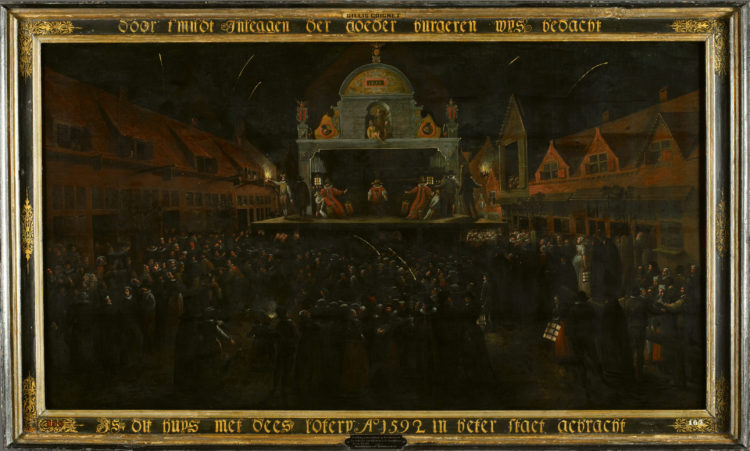Another form of urban entertainment that took theatricality into the city is the social event of the lottery in Europe. The staging of practices of knowing by chance as a civic spectacle was suggestive of the constituents of a theatrical ‘scene’ in an apparently unrelated context. The excitement and suspense of the famous lottery of 1592 held for the Amsterdam Dolhuis (insane asylum), in which the draw lasted for 68 days and nights, is captured in this painting. It conveys the theatricality needed and employed to perfection in a lottery that had to hold the attention and interest of an audience for over two months, round the clock. The raised platform acts as a stage where the draw is carried out by two young boys in white clothes meant to symbolise their innocence and neutrality as agents. On the sides, and in the middle of the gable, actual theatrical performances are being put on. The watching crowd are assembled with lanterns in this night-time scene, as they await the verdict of chance in this layered theatre of risk.
Click here to see another early modern lottery in the Marketplace section.











